skip to main |
skip to sidebar
 #6Pentax 645
#6Pentax 645
And here comes my second medium format addition. Wow what a camera. Thanks to Robin Assner for loaning the camera for me for entirely too long. I never understand why I take so long to shoot 120. There's only 12 pictures! Well, because of this camera's 6x4.5 format, it took about 15 shots. Still, it should have taken me all of 15 minutes to spend every picture on here, but sadly it took me about two weeks. The struggles of being a perfectionist.
 I recently was able to purchase an array of different medium format films and excited to do so because I have little experience shooting with the range that is offered in medium format. I am also always excited to see other photographers use these films so successfully to play with different tonal ranges, both harsher and softer. I know from previous experience that Fuji PRO400H is a pretty vibrant film, so I was excited to shoot with some Kodak NC films to see if the pictures would be a bit desaturated (comparatively). I shot a roll of Kodak 400NC through this camera to achieve, what I believe, are some pretty even, and not too risky tonal ranges. I am a HUGE proponent of Fuji films, so its hard for me to openly shoot Kodak. I hate how some Kodak films (maybe all) turn an awful shade of green in low light conditions, when I feel Fuji holds up tonally very well in low light settings. However, that's all just a personal taste thing, and for now, I am very happy with what the Kodak NC has been doing.
I recently was able to purchase an array of different medium format films and excited to do so because I have little experience shooting with the range that is offered in medium format. I am also always excited to see other photographers use these films so successfully to play with different tonal ranges, both harsher and softer. I know from previous experience that Fuji PRO400H is a pretty vibrant film, so I was excited to shoot with some Kodak NC films to see if the pictures would be a bit desaturated (comparatively). I shot a roll of Kodak 400NC through this camera to achieve, what I believe, are some pretty even, and not too risky tonal ranges. I am a HUGE proponent of Fuji films, so its hard for me to openly shoot Kodak. I hate how some Kodak films (maybe all) turn an awful shade of green in low light conditions, when I feel Fuji holds up tonally very well in low light settings. However, that's all just a personal taste thing, and for now, I am very happy with what the Kodak NC has been doing. The camera itself is probably one of the most high-tech film cameras I have ever shot with. It has a diopter ring on it that you can adjust for near or far-sightedness! And me being a lifelong glasses wearer, I was pretty excited and a little shocked to see that I could focus a camera without my glasses on. I felt like a cyborg. The camera has auto film advance, which is nice on a medium format camera. Its also the first medium format SLR I've shot through, which of course made composing a cinch. The shutter mirror sounds like a drawbridge, but obviously works with much more haste.
The camera itself is probably one of the most high-tech film cameras I have ever shot with. It has a diopter ring on it that you can adjust for near or far-sightedness! And me being a lifelong glasses wearer, I was pretty excited and a little shocked to see that I could focus a camera without my glasses on. I felt like a cyborg. The camera has auto film advance, which is nice on a medium format camera. Its also the first medium format SLR I've shot through, which of course made composing a cinch. The shutter mirror sounds like a drawbridge, but obviously works with much more haste.

The LED on top of the camera told me my shutter speed, aperture, picture count. It has exposure compensation, you can use a range if ISOs, and to top it all off, it has a sweet machine gun-like black handle on the side to help you steady the behemoth that weighs about as much as my head. You definitely know you are holding a camera. Half the time when I'm holding my Holga I forget about it and it drops to the ground because it weighs about as much as chewing gum foil, sans chewing gum.
The drive power for the camera lives in the black handle, four AAs. The camera I borrowed had a hard time reading these batteries and at times I would be standing for a while in front of a scene I was shooting thinking that if I pressed the shutter button harder, it would fire. When the camera seemed low on charge and I tried to fire the shutter, it would just turn off. I replaced the batteries and rejuvenated the connection points a little bit and eradicated the problem, but not before I missed a couple good picture opportunities, and had one misfire:
 With a separate back attachment, you can also shoot 220 with this camera, which is a nice feature. I haven't shot much 120 in my life, but know that it is a pain in the butt to change when you are missing a great photo opportunity.
With a separate back attachment, you can also shoot 220 with this camera, which is a nice feature. I haven't shot much 120 in my life, but know that it is a pain in the butt to change when you are missing a great photo opportunity.
Other than that, the camera takes a perfect picture practically every time. I'm never very excited about the 6x4.5 format, I know that I usually shoot medium format for the 6x6 square format which appeals to me more. But if I wanted a camera that took great pictures ridiculously consistently, I would pick up this one or another SLR with all the bells and whistles this one had.
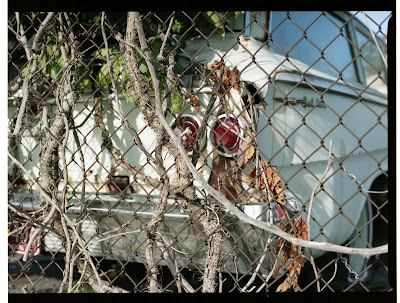
Check out more shots from the camera and my flickr site here.
If you want to loan me a camera to shoot with for a month, I will send the camera back to you with all the shots I took. The only cost to you is shipping the camera one way. Please take part!

#5Lomo Lubitel 166B
My first 120 camera added to the blog! Dave Savino, a colleague of mine, heard about the blog and asked if I would like the Lubitel to use. I told him sure!

I was shooting Fuji PRO400H. I like its saturated colors, and how it holds up so much better than Kodak in low light situations (in my opinion).
The camera is really easy to shoot with. Focusing is by guessing, although there is a circle in the viewfinder that seems unchanging when I change the focal distance on the lens. Is this supposed to do something, or is it there for aesthetics? Well, one roll through this camera and I didn't figure it out. If it is used to focus, that's awesome, however, the distances on the top lens ring worked well enough for me to take a roll through the camera and get some good results. Keep in mind it might take a roll or two to get used to the focusing, if in fact this circle is supposed to help. Good thing is, it isn't needed.

Also, be sure to carry around a light meter with you if you don't already. This has a good range of shutter speeds, and a decent range of apertures, so use a light meter to your advantage. If you are like me, I take a bit longer setting up a shot with 120 than I do with 35mm. Maybe because its a little more expensive and a little tougher to get developed where I am.
 I was thinking that this camera would produce some pretty heavy vignetting like other cameras produced by Lomo, but it actually turned out to give some pretty clear shots, maybe slightly wide angle and losing a little focus in the corners. After all, it is on the cheaper side as far as 120 TLR's go.
I was thinking that this camera would produce some pretty heavy vignetting like other cameras produced by Lomo, but it actually turned out to give some pretty clear shots, maybe slightly wide angle and losing a little focus in the corners. After all, it is on the cheaper side as far as 120 TLR's go.

Check out some other shots and my flickr site here.
If you want to loan me a camera to shoot with for a month, I will send the camera back to you with all the shots I took. The only cost to you is shipping hte camera one way. Please take part!
 #4Olympus Stylus
#4Olympus Stylus
So when Frank Harshman passed this little black beauty to me, my initial hopes were that it would behave exactly like its somewhat expensive, and unlikely stardom begotten cousin, the Olympus Stylus Epic mju. I found out that the mju and Stylus are the same, only foreign counterparts. However, its the EPIC in the name that makes it special. These Stylus cameras caught my eye because they were sons of the XA cameras, which I own and love.
I think it is important to mention camerapedia in relation to this blog. I've decided that, while I could regurgitate all of the information and specs of each of these cameras from camerapedia or by scouring the internets, I am trying to rather display the types of photos that this camera takes, as well as how it acts while shooting a roll of film. I feel that a lot of websites, including camerapedia, fail to convey a real-world sense of how a camera functions. From now on, think of this blog as the layperson's guide to various cameras, an abridged companion to camerapedia, perhaps.
Well, back to the camera. Basic point and shoot, all automatic functions. Even winds your film for you! It is weird for me to have a camera that winds the film for you, especially when a broad majority of my cameras don't require batteries to work.
 OK so I'm of course shooting 35mm Fuji 400, my standard for all new cameras. It has great color, and this camera really showcases that. The camera has a sliding door that houses the lens and exposure and all that other good stuff. It has a screen on top that tells you what picture you are on, and shows if you want to set a self-timer or turn off the flash. I left the flash settings on automatic, and for all the 24 pictures I took, the flash only went off once, to brighten up this photo:
OK so I'm of course shooting 35mm Fuji 400, my standard for all new cameras. It has great color, and this camera really showcases that. The camera has a sliding door that houses the lens and exposure and all that other good stuff. It has a screen on top that tells you what picture you are on, and shows if you want to set a self-timer or turn off the flash. I left the flash settings on automatic, and for all the 24 pictures I took, the flash only went off once, to brighten up this photo:
 While on the subject of exposure, at various times it tended to have a real problem. There were a couple of photos I took where it seemed as though they had ample light, so the flash didn't go off but the picture was still somewhat underexposed. Its as if the camera was taking the exposure settings from the highlights, and adjusting the shutter speed to fit them.
While on the subject of exposure, at various times it tended to have a real problem. There were a couple of photos I took where it seemed as though they had ample light, so the flash didn't go off but the picture was still somewhat underexposed. Its as if the camera was taking the exposure settings from the highlights, and adjusting the shutter speed to fit them.
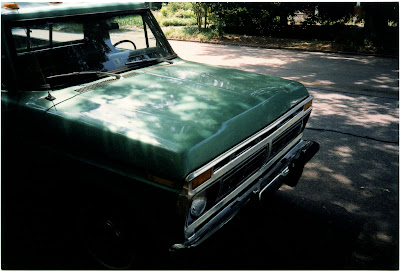
And there were some low light situations where the camera performed perfectly.
 It has a fixed aperture of 3.5, which is obviously large enough for 400 ASA film, but I'm sure the camera is more interested in a quick shutter speed, so it uses its quickest possible setting every time. Usually this is a commendable trait in a point and shoot, but sometimes the exposures were way off, and usually based its exposure off the lightest area of a photo, leaving absolutely no detail in the dark areas. One of my negatives was a picture in practically perfectly balanced sunlight, but the negative was completely blow out, so much so that the shop felt the need to not print it. So, the best shots taken were ones that had pretty even values throughout the entire composition.
It has a fixed aperture of 3.5, which is obviously large enough for 400 ASA film, but I'm sure the camera is more interested in a quick shutter speed, so it uses its quickest possible setting every time. Usually this is a commendable trait in a point and shoot, but sometimes the exposures were way off, and usually based its exposure off the lightest area of a photo, leaving absolutely no detail in the dark areas. One of my negatives was a picture in practically perfectly balanced sunlight, but the negative was completely blow out, so much so that the shop felt the need to not print it. So, the best shots taken were ones that had pretty even values throughout the entire composition.
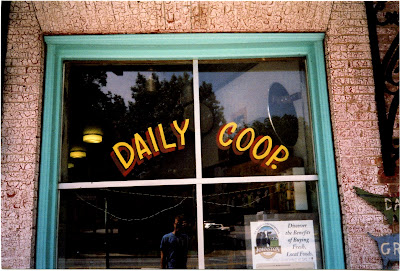
 The camera also had some significant problems with its autofocus. And when I say significant problems, I mean it was spotty, especially with hopefully predictable photos. This one should be perfectly and easily focused, but it wasn't:
The camera also had some significant problems with its autofocus. And when I say significant problems, I mean it was spotty, especially with hopefully predictable photos. This one should be perfectly and easily focused, but it wasn't:
 And this one, which might have more of a problem focusing, came out pretty well:
And this one, which might have more of a problem focusing, came out pretty well:

More on the beauty of Schlitz cans later.
Overall, this camera was easy to use and worked great to walk around an old neighborhood and take photos of other people's houses, which is kind of awkward.
If you want to see more pictures taken with this camera, check them out here.
If you want to see more of my work and more pictures taken with a variety of different cameras, check that out here.
AND, most importantly, if you want to loan me a camera, please email me at tatemillerton@yahoo.com to do so! Thanks!
 #3
#3
VOLTRON Star Shooter 110
Its as if two of the best things known to man have combined, forming the eighth wonder of the world! The Voltron Star Shooter was loaned to me by fellow photographer and BFF, Will Arnold. You can find his awesome work on his site and on his flickr.
Everything you need to know about this camera can be gathered by a quick glance. Its awesome.
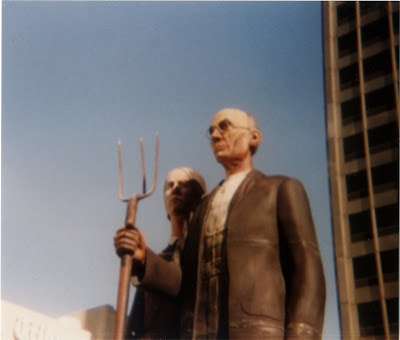
But let's get down to the specs. It takes 110 film, so it obviously contains all the controls of a classic 110 camera: shutter and film advance. That's it. You also might think by its great look that it has two lenses. Nope. The big lens fools you into thinking 'is this an SLR?' No sir. Its just for looks. In stark contrast to the real Voltron, a demigod made up of different multi-colored human-driven war vehicles and incarnated only to destroy major enemies. And yes, the camera folds up into a classic SLR-style camera. Although, it is pretty great to walk around town with a robot camera strapped to your neck. Notice: I put the word 'robot' in front of the word 'camera' because it is first a robot.
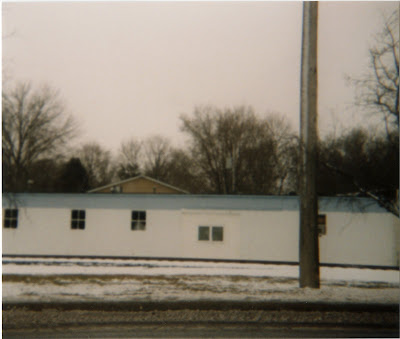
The camera definitely has difficulty in low light or near low light situations, its obvious fixed shutter speed being the culprit. I also used Fuji 200 in the camera, and I definitely think it would have benefited from Kodak 400 to give me some better shots.
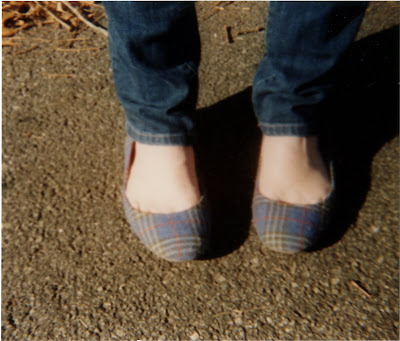
So yes, I must admit, it is just a regular 110 with some flashy bits attached. But to be honest, those flashy bits are AMAZING. In reality I wish all cameras looked more like robots. Robot transformers who will kill anyone who dare question why I'm using such a seemingly crappy camera.
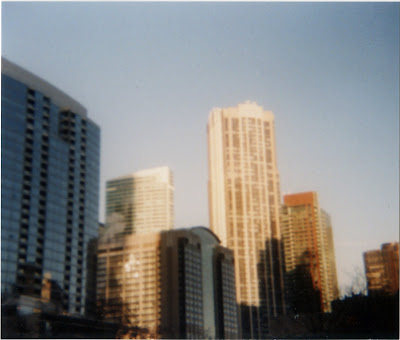
But the Voltron is a collectible. They are extremely rare, and I'm so excited to have had the chance to shoot through this camera and add it to the loan project. If you want a little more information about the camera itself, check it out on camerapedia.
To see more of my work, check out my flickr!
And of course, keep the cameras coming! Email me at tatemillerton@yahoo.com to setup a loan!




 With a separate back attachment, you can also shoot 220 with this camera, which is a nice feature. I haven't shot much 120 in my life, but know that it is a pain in the butt to change when you are missing a great photo opportunity.
With a separate back attachment, you can also shoot 220 with this camera, which is a nice feature. I haven't shot much 120 in my life, but know that it is a pain in the butt to change when you are missing a great photo opportunity.



















